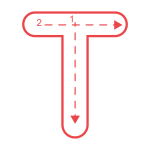STEM 101
STEM stands for Science, Technology, Engineering and Mathematics. It refers to a broad educational approach and career field that focuses on these four disciplines, emphasizing critical thinking, problem-solving, creativity, and innovation.
What is STEM??

Science
Science involves studying the natural world through observation, experimentation, and evidence-based analysis. It encompasses a variety of fields such as biology, chemistry, physics, environmental science, and earth sciences. The goal is to understand how things work in the physical and natural world and to make informed predictions or discoveries based on evidence.
Key skills: critical thinking, data analysis, scientific inquiry, and research.

Technology
Technology focuses on the practical application of scientific knowledge to design, create, and use tools, machines, systems, and processes that solve problems or improve lives. It includes areas like information technology, software development, robotics, telecommunications, and cybersecurity. Technology is constantly evolving and plays a crucial role in everyday life and industry.
Key skills: programming, technical literacy, digital innovation, and systems thinking.

Engineering
Engineering applies science and math principles to solve complex problems by designing, building, and maintaining structures, systems, and devices. Engineering fields include civil, mechanical, electrical, aerospace, and chemical engineering, among others. Engineers focus on efficiency, safety, sustainability, and functionality in the design and production process.
Key skills: problem-solving, design thinking, project management, and creativity.

Mathematics
Mathematics is the study of numbers, patterns, structures, and abstract concepts that are used to understand and model real-world phenomena. It underpins the other STEM fields by providing the tools for measuring, analyzing, and solving problems. Math includes fields like algebra, geometry, calculus, statistics, and applied mathematics.
Key skills: quantitative reasoning, logical thinking, pattern recognition, and analytical problem-solving.




